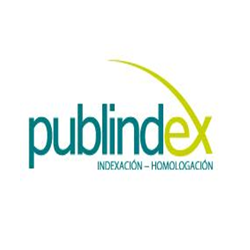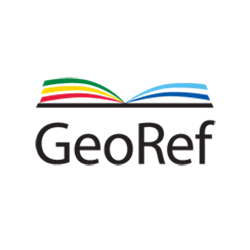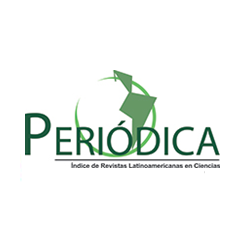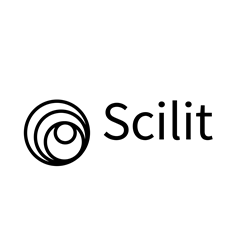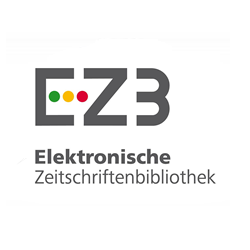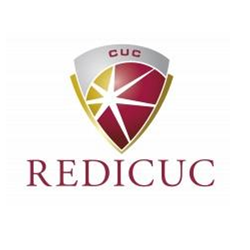Simulating beer pasteurization by considering the effect of glass container by using computational fluid dynamics
DOI:
https://doi.org/10.17981/ingecuc.17.1.2021.02Keywords:
pasteurization, beer, free convection, computational fluid dynamics, pasteurization unitsAbstract
Introduction: The simulation of the pasteurization process of bottled beer, considering the beer-CO2-glass system, allows obtaining more real results of the behavior of free convection.
Objective: The objective of the work is to analyze the influence of the consideration of the container, comparing the results of the profiles of speed and temperature and of the pasteurization units in the zones of initial heating, pasteurization and final cooling, without and with the consideration of transfer heat through the glass.
Method: Computational fluid dynamics is used with COMSOL Multiphisics V 5.1 software.
Results: Different behaviors are obtained in the speed and temperature profiles of the beer, due to the reduction of the effective exchange time between the beer and the water, because the glass must reach thermal stability, causing increases in the driving force and reduction of the temperature retention time that guarantees microbial lethality.
Conclusions: The values of the pasteurization units at the outlet are higher than recommended, compromising the organoleptic quality of the beer.
Downloads
References
L. A. Patiño, H. Espinoza, & O. Velásquez, “Estudio numérico de la transferencia de calor en la cerveza en el proceso de pasteurización,” Rev Cs Ing, vol. 22, no. 3, pp. 19–25, 2001. Available: http://erevistas.saber.ula.ve/index.php/cienciaeingenieria/article/view/432
L. A. Patiño, H. Espinoza, M. Collado & O. Velásquez, “Estudio del efecto de la presión dinámica de CO2 sobre la distribución de velocidades y temperatura de la cerveza en el proceso de pasteurización,” Saber, vol. 17, no. 1, pp. 41–47, 2005. Available: https://www.redalyc.org/pdf/4277/427739426006.pdf
L. Jiji, Heat convection. Ge: Springer-Verlag Berlin Heidelberg, 2006. Available: https://www.twirpx.com/file/1133919/
E. Cao, Heat transfer in process engineering. NY, USA: McGraw-Hill, 2010. Available: https://www.technicalbookspdf.com/heat-transfer-in-process-engineering-by-eduardo-cao/
K. Hoffman, “Beer pasteurization models,” Thesis MS, Informat Mathem Model. DTU, KL, DK, 2006. Available: http://www2.imm.dtu.dk/pubdb/edoc/imm4480.pdf
S. K. Fasogbon & O. E. Oguegbu, “Modelling heat transfer characteristics in the pasteurization process of medium long necked bottled beers,” Eur J Engr Technol, vol. 7, no. 3, pp. 21–39, 2019. Available from http://www.idpublications.org/wp-content/uploads/2019/03/Full-Paper-MODELLING-HEAT-TRANSFER-http:/www.idpublications.org/wp-content/uploads/2019/03/Full-Paper-MODELLING-HEAT-TRANSFER-CHARACTERISTICS-IN-THE-PASTEURIZATION-PROCESS-OF-MEDIUM-LONG.pdf
M. F. Nápoles, M. Pérez & M. L. De la Cruz, “Modelación matemática de la pasteurización de la cerveza utilizando dinámica de fluidos computacional,” Centro Azúcar, vol. 47, no. 1, pp. 67–76, 2020. Available: http://centroazucar.uclv.edu.cu/index.php/centro_azucar/article/view/170
M. Pérez, M. F. Nápoles & M. L. De la Cruz, “Estudio del efecto del calentamiento y el enfriamiento de la botella durante la pasteurización de la cerveza,” Centro Azúcar, vol. 47, no. 2, pp. 32–41,2020.Available: http://centroazucar.uclv.edu.cu/index.php/centro_azucar/article/view/197
C. Fontalvo, R. Pineda & J. Duarte , “Optimización energética de bombas centrífugas a través de un análisis paramétrico en CFD y modelos de pérdida de energía,” INGE CUC, vol. 16, no. 1, pp. 1–21,2020. https://doi.org/10.17981/ingecuc.16.1.2020.01
A. J. Benitez, C. A. Vargas & W. Montealegre, “Simulación de moldeo por inyección basado en el método de volúmenes finitos (FVM),” INGE CUC , vol. 16, no. 2, pp. 1–11, 2020. https://doi.org/10.17981/ingecuc.16.2.2020.08
E. Dilay, J.V.C. Vargas, S.C. Amico & J.C. Ordonez, “Modeling, Simulation and Optimization of a Beer Pasteurization Tunnel,” J Food Eng, vol. 77, no. 3, pp. 500–513,Dec. 2006. https://doi.org/10.1016/j.jfoodeng.2005.07.001
P.E. Augusto, T. Pinheiro & M. Cristianini, “Using Computational Fluid-Dynamics (CFD) for the evaluation of beer pasteurization: effect of orientation of cans,” FST, vol. 30, no. 4, pp. 980–986, 2010. https://doi.org/10.1590/S0101-20612010000400022
L. I. Laíce, “Estudo cinético do processo de pasteurização da cerveja numa pasteurizadora de túnel da fábrica de cervejas de moçambique,” Tesis grado, dpto Quím, UEM, MZ, 2013. Disponible en http://monografias.uem.mz
L. Pardo, “Microorganismos termorresistentes en la producción de cerveza. Estudio inicial,” Tesis grado, dpto Biol, UDC, ES, 2017. Disponible en https://ruc.udc.es/dspace/handle/2183/19612
M. Suárez, “Cerveza: componentes y propiedades,” Tesis Master, dpto Biotec. Alim, Uniovi, OV, ES, 2013. Available: http://hdl.handle.net/10651/19093
M. Morales, “Reacciones químicas en la cerveza,” Rev Quím, vol. 32, no. 1, pp. 4–11, Abr. 24, 2018. Available: http://revistas.pucp.edu.pe/index.php/quimica/article/view/20105
P. Jonáš, “Modelling and control of tunnel pasteurizer,” Diploma Thesis, CVUT, PR, CZE, 2009. Available: https://support.dce.felk.cvut.cz/mediawiki/images/b/b0/Dp_2009_jonas_pavel.pdf
E. Bhuvaneswari & C. Anandharamakrishnan, “Heat transfer analysis of pasteurization of bottled beer in a tunnel pasteurizer using computational fluid dynamics,” Innov Food Sci Emerg Technol, vol. 23, pp. 156–163, Jun., 2014. https://doi.org/10.1016/j.ifset.2014.03.004
C. Zufall & K. Wackerbauer, “The Biological Impact of Flash Pasteurization Over a Wide Temperature Interval,” J Inst Brew, vol. 106, no. 3, pp. 163–168, 2000. https://doi.org/10.1002/j.2050-0416.2000.tb00053.x
R. A. González-Castellanos & L. D. Curiel, “Metodología de la investigación científica para las ciencias técnicas,” Partes I, II y III, CU: Editora Universitaria, 2018. http://doi.org/10.5281/zenodo.1296510
R. B. Bird, W. E. Stewart & E. N. Lightfoot, Fenómenos de transporte. Bcn, ES: Editorial Reverté, 1992.
M. Cortés, P. Fazio, J. Rao, W. Bustamante & S. Vera, “Modelación CFD de casos básicos de convección en ambientes cerrados: necesidades de principiantes en CFD para adquirir habilidad y confianza en la modelación CFD,” Rev Ing Cons, vol. 19, no. 1, pp. 22–45, 2014. Available from https://www.ricuc.cl/index.php/ric/article/view/506/pdf
J. G. Ardila, D. A. Hincapé & J. A. Sierra , “Independencia de malla en tubos torsionados para intercambio de calor: caso de estudio,” Rev Fac Cs Univ Nal Col, vol. 5, no. 1, pp. 124–140, 2016. https://doi.org/10.15446/rev.fac.cienc.v5n1.54231
L. F. Klein, “ Estudo de desempenho de esguichos para túneis de pasteurização,” Tesis MS, Dpto Ing, UFRGS. Porto Alegre do Sul, BR, 2009.
F.P. Incropera & D.P. Dewitt, Fundamentals of heat and mass transfer, 8 Ed. NY, USA: John Wiley and Sons, 1990.
D. Q. Kern, Procesos de transferencia de calor. MX. DF, MX: Editorial Continental, 1999.
J.C. Mendieta, M. A. Olarte & H. González, “Diseño de un sistema de control inteligente para un pasteurizador tipo túnel,” Prospectiva, vol. 10, no. 2, pp. 81–88, Dec. 2012. https://doi.org/10.15665/rp.v10i2.237

Published
How to Cite
Issue
Section
License
Copyright (c) 2020 INGE CUC

This work is licensed under a Creative Commons Attribution-NonCommercial-NoDerivatives 4.0 International License.
Published papers are the exclusive responsibility of their authors and do not necessary reflect the opinions of the editorial committee.
INGE CUC Journal respects the moral rights of its authors, whom must cede the editorial committee the patrimonial rights of the published material. In turn, the authors inform that the current work is unpublished and has not been previously published.
All articles are licensed under a Creative Commons Attribution-NonCommercial-NoDerivatives 4.0 International License.


 English
English
 Español (España)
Español (España)

